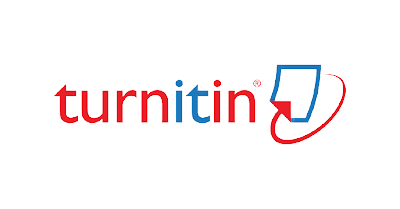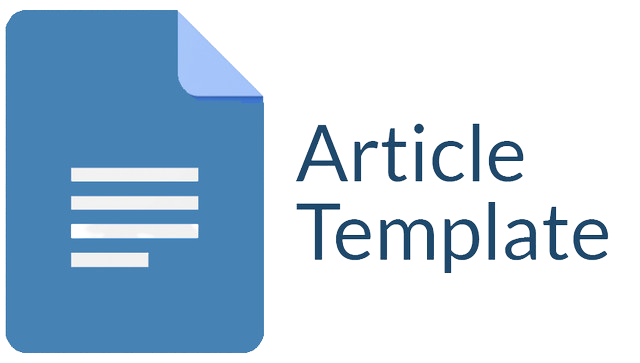PREDIKSI PEMILIHAN PROGRAM STUDI PADA MAHASISWA KIP FAKULTAS TEKNIK MENGGUNAKAN ALGORITMA RANDOM FOREST
Studi Kasus pada Universitas Muhammadiyah Banjarmasin
Abstract
Pemilihan program studi yang tepat sangat penting untuk mendukung keberhasilan akademik, terutama bagi mahasiswa penerima bantuan KIP Kuliah. Banyak kasus menunjukan bahwa mahasiswa memilih prodi tidak sesuai dengan minat atau potensi karena pengaruh luar, seperti orang tua atau keterbatasan informasi. Penelitian ini bertujuan untuk mengklasifikasikan pilihan program studi mahasiswa KIP di Universitas Muhammadiyah Banjarmasin menggunakan algoritma Random Forest. Dataset diperoleh dari data akademik mahasiswa, mencakup atribut seperti nilai, jurusan asal, dan pilihan pordi. Penelitian ini dilakukan dengan tahapan praproses data, pelatihan model Random Forest, serta evaluasi performa model. Hasil evaluasi menunjukan akurasi sebesar 89%, yang menunjukan algoritma ini efektif dalam membantu merekomendasikan program studi sesuai. Temuan ini di harapkan dapat mendukung proses pembinaan akademik dan penempatan mahasiswa oleh pihak universitas.
Downloads
References
Andrianof, H., Gusman, A. P., & Putra, O. A. (2023). Implementasi algoritma random forest untuk prediksi kelulusan mahasiswa berdasarkan data akademik: studi kasus di perguruan tinggi indonesia. Jurnal Sains Informatika Terapan (JSIT), 4(1), 24–28. https://doi.org/https://doi.org/10.62357/jsit.v4i2.464
Aurellia, O., & Apsiswanto, U. (2022). Penerapan metode simple additive weighting (saw) untuk menyeleksi penerima bantuan langsung tunai dana desa (Blt Dd). EDUSAINTEK: Jurnal Pendidikan, Sains Dan Teknologi, 9(3), 930–942. https://doi.org/10.47668/edusaintek.v9i3.624
Doahir, A., & Qolbi, A. N. (2022). Analisis potensi siswa untuk kuliah dengan classification menggunakan metode decision tree. Jurnal POROS TEKNIK, 14(1), 28–32.
Gagan Suganda, Marsani Asfi, Ridho Taufiq Subagio, & Ricky Perdana Kusuma. (2022). Penentuan penerima bantuan beasiswa kartu indonesia pintar (kip) kuliah menggunakan naïve bayes classifier. JSiI (Jurnal Sistem Informasi), 9(2), 193–199. https://doi.org/10.30656/jsii.v9i2.4376
Hafiz, Muhamad Prayoga, B., & Ermatita. (2024). Analisis pemilihan jurusan pada calon siswa smk negeri 4 palembang pada faktor penentu pemilihan jurusan menggunakan association rule dan random forest analysis of major selection for prospective students of smk negeri 4 palembang on determining factors f. Jurnal Pendidikan Dan Teknologi Indonesia (JPTI), 4(12), 537–547.
Khairunnisa, Anedea, T., & Novianti, I. (2024). Evaluasi penerpan program kip-kuliah mengacu pada pasal 76 uu no.12 tahun 2012 menggunakan metode seven tools di teknik industri universitas pamulang. AKADEMIK: Jurnal Mahasiswa Humanis, 4(3), 753–762.
Kurniawijaya, P. A., & Karsana, I. W. W. (2023). Implementasi metode ahp dalam sistem penunjang keputusan penerima kip kuliah. JUKI : Jurnal Komputer Dan Informatika, 5(1), 22–31.
Marlina Haiza, Elmayati, Zulius Antoni, & Wijaya Harma Oktafia Lingga. (2023). Penerapan algoritma random forest dalam klasifikasi penjurusan di sma negeri tugumulyo. penerapan kecerdasan buatan, 4(2), 138–143.
Mulyo, H., & Maori, N. A. (2024). Peningkatan akurasi prediksi pemilihan program studi calon mahasiswa baru melalui optimasi algoritma decision tree dengan teknik pruning dan ensemble. Jurnal Disprotek, 15(1), 15–25. https://doi.org/10.34001/jdpt.v15i1.5585
Novianto, E., Suhirman, S., & Prasetyo, D. (2024). Perbandingan metode klasifikasi random forest dan support vector machine dalam memprediksi capaian studi mahasiswa. 9(4), 1821–1833.
Novrian, R., Agustiani, T., Fikri, M., Hikmatulloh, M. F., Gunawan, M. E., & Firdaus, U. (2024). Penerapan algoritma random forest dalam prediksi status penerima pip pada siswa: studi kasus pada smk amaliah 1. Karimah Tauhid, 3(2), 1791–1799. https://doi.org/10.30997/karimahtauhid.v3i2.11937
Pratama, A. R., Aryanto, R. R., & Pratama, A. T. M. (2023). Sistem rekomendasi program studi sarjana berbasis machine learning untuk model klasifikasi calon mahasiswa baru. Journal of Information Technology and Society, 1(1), 11–14. https://doi.org/10.35438/jits.v1i1.20
Pratama, T. Y., & Armansyah. (2024). Decision Tree C4.5 dengan teknik information gain untuk klasifikasi pemilihan program studi tingkat lanjut. Journal of Information System Research (JOSH), 5(4), 1042–1052. https://doi.org/10.47065/josh.v5i4.5643
Putri, N. A. Y., Subagio, R. T., & Asfi, M. (2021). Sistem pendukung keputusan penilaian kinerja mahasiswa kip kuliah dengan penerapan metode topsis dan promethee. Jurnal Media Informatika Budidarma, 5(4), 1394. https://doi.org/10.30865/mib.v5i4.3268
Qadrini, L., Seppewali, A., & Aina, A. (2021). Decision tree dan adaboost pada klasifikasi penerima program bantuan sosial. JIP: Jurnal Inovasi Penelitian, 2(7).
Saleh, J. S., M.Adrian, A., & Sanger, J. B. (2022). Sistem klasifikasi kelulusan mahasiswa dengan algoritma random forest. Jurnal Ilmiah Realtech, 18(1), 10–14.
Saprianto, R., Raysharie, P. I., Hukom, A., & Takari, D. (2023). Implementasi kip kuliah pada mahasiswa/i universitas palangkaraya implementation of lecturing kip for students of palangkaraya university. MUQADIMMAH: Jurnal Ekonomi, Manajemen, Akuntansi Dan Bisnis, 1(2).
Setyowati, S. L., Qalbi, A., Aristawidya, R., Sartono, B., & Firdawanti, A. R. (2025). Optimizing random forest parameters with hyperparameter tuning for classifying school-age kip eligibility in west java optimizing random forest parameters with hyperparameter tuning for classifying school-age kip eligibility in west java. JAMBURA JOURNAL OF MATHEMATICS, 7(1), 40–48. https://doi.org/https://doi.org/10.37905/jjom.v7i1.28736 ©
Shodiqul Munir, A., Sunyoto, A., & Al Fatta, H. (2023). Implementasi metode seleksi fitur menggunakan artificial bee colony pada klasifikasi retinal nerve fiber layer. EDUSAINTEK: Jurnal Pendidikan, Sains Dan Teknologi, 10(2), 541–553. https://doi.org/10.47668/edusaintek.v10i2.782
Yustanti, W., & Rochmawati, N. (2022). Analisis algoritma klasifikasi untuk memprediksi karakteristik mahasiswa pada pembelajaran daring. Jurnal Edukasi Dan Penelitian Informatika (JEPIN), 8(1), 57. https://doi.org/10.26418/jp.v8i1.50452
Copyright (c) 2025 Hamdani Hamdani Hamdani

This work is licensed under a Creative Commons Attribution-ShareAlike 4.0 International License.
Jurnal allows anyone to compose, correct, and do derivative works, even for commercial purposes, as long as they credit for the original work. This license is the freest. It is recommended for maximum distribution and use of licensed material.
The submitted paper is assumed not to contain any proprietary materials that are not protected by patent rights or patent applications; The responsibility for technical content and protection of proprietary materials rests with the authors and their organizations and not the responsibility of journal or its editorial staff. The primary (first/appropriate) author is responsible for ensuring that the article has been viewed and approved by all other authors. The author's responsibility is to obtain all necessary copyright waivers to use any copyrighted material in the manuscript before submission.
Jurnal Pendidikan, Sains dan Teknologi allows the author(s) to hold the copyright without restrictions and allow the author(s) to retain publishing rights without restrictions. Jurnal Pendidikan, Sains dan Teknologi CC-BY-SA or an equivalent license as the optimal license for the publication, distribution, use, and reuse of scholarly work. Jurnal Pendidikan, Sains dan Teknologi allows the author(s) to hold the copyright without restrictions and allow the author(s) to retain publishing rights without restrictions. Jurnal Pendidikan, Sains dan Teknologi CC-BY-SA or an equivalent license as the optimal license for the publication, distribution, use, and reuse of scholarly work.
In developing strategy and setting priorities Jurnal Pendidikan, Sains dan Teknologi recognize that free access is better than priced access, libre access is better than free access, and libre under CC-BY-SA or the equivalent is better than libre under more restrictive open licenses. We should achieve what we can when we can. We should not delay achieving free in order to achieve libre, and we should not stop with free when we can achieve libre.
Jurnal Pendidikan, Sains dan Teknologi is licensed under a Creative Commons Attribution-ShareAlike 4.0 International License.
You are free to:
- Share a copy and redistribute the material in any medium or format
- Adapt a remix, transform, and build upon the material for any purpose, even commercially.
- The licensor cannot revoke these freedoms as long as you follow the license terms.






